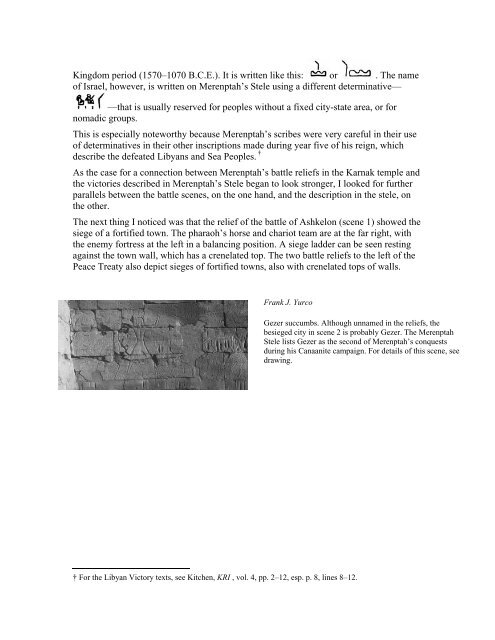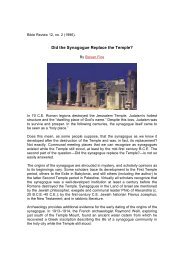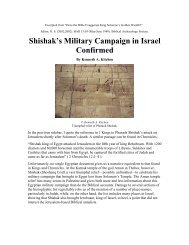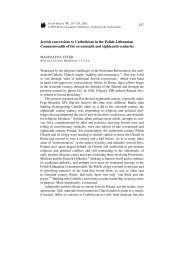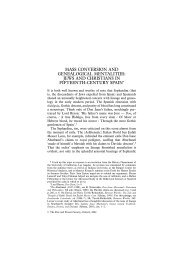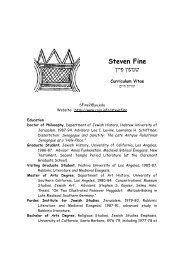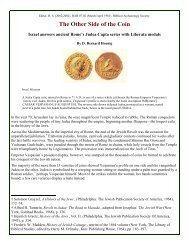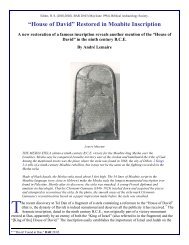3200-Year-Old Picture of Israelites Found in Egypt
3200-Year-Old Picture of Israelites Found in Egypt
3200-Year-Old Picture of Israelites Found in Egypt
Create successful ePaper yourself
Turn your PDF publications into a flip-book with our unique Google optimized e-Paper software.
K<strong>in</strong>gdom period (1570–1070 B.C.E.). It is written like this: or . The name<br />
<strong>of</strong> Israel, however, is written on Merenptah’s Stele us<strong>in</strong>g a different determ<strong>in</strong>ative—<br />
—that is usually reserved for peoples without a fixed city-state area, or for<br />
nomadic groups.<br />
This is especially noteworthy because Merenptah’s scribes were very careful <strong>in</strong> their use<br />
<strong>of</strong> determ<strong>in</strong>atives <strong>in</strong> their other <strong>in</strong>scriptions made dur<strong>in</strong>g year five <strong>of</strong> his reign, which<br />
describe the defeated Libyans and Sea Peoples. †<br />
As the case for a connection between Merenptah’s battle reliefs <strong>in</strong> the Karnak temple and<br />
the victories described <strong>in</strong> Merenptah’s Stele began to look stronger, I looked for further<br />
parallels between the battle scenes, on the one hand, and the description <strong>in</strong> the stele, on<br />
the other.<br />
The next th<strong>in</strong>g I noticed was that the relief <strong>of</strong> the battle <strong>of</strong> Ashkelon (scene 1) showed the<br />
siege <strong>of</strong> a fortified town. The pharaoh’s horse and chariot team are at the far right, with<br />
the enemy fortress at the left <strong>in</strong> a balanc<strong>in</strong>g position. A siege ladder can be seen rest<strong>in</strong>g<br />
aga<strong>in</strong>st the town wall, which has a crenelated top. The two battle reliefs to the left <strong>of</strong> the<br />
Peace Treaty also depict sieges <strong>of</strong> fortified towns, also with crenelated tops <strong>of</strong> walls.<br />
Frank J. Yurco<br />
† For the Libyan Victory texts, see Kitchen, KRI , vol. 4, pp. 2–12, esp. p. 8, l<strong>in</strong>es 8–12.<br />
Gezer succumbs. Although unnamed <strong>in</strong> the reliefs, the<br />
besieged city <strong>in</strong> scene 2 is probably Gezer. The Merenptah<br />
Stele lists Gezer as the second <strong>of</strong> Merenptah’s conquests<br />
dur<strong>in</strong>g his Canaanite campaign. For details <strong>of</strong> this scene, see<br />
draw<strong>in</strong>g.


